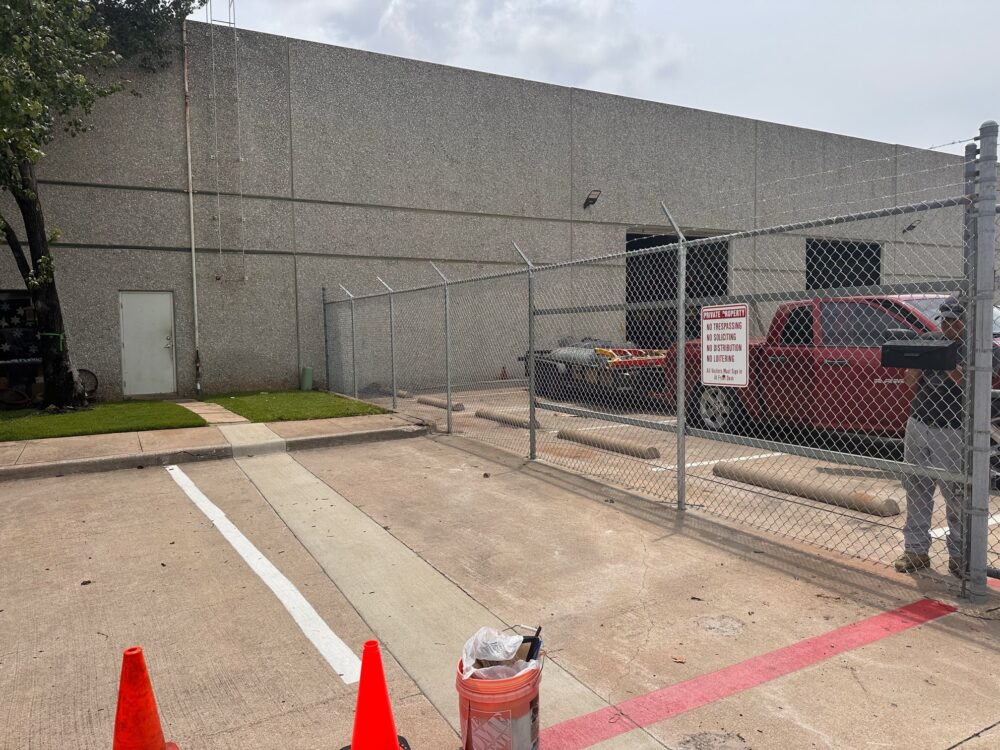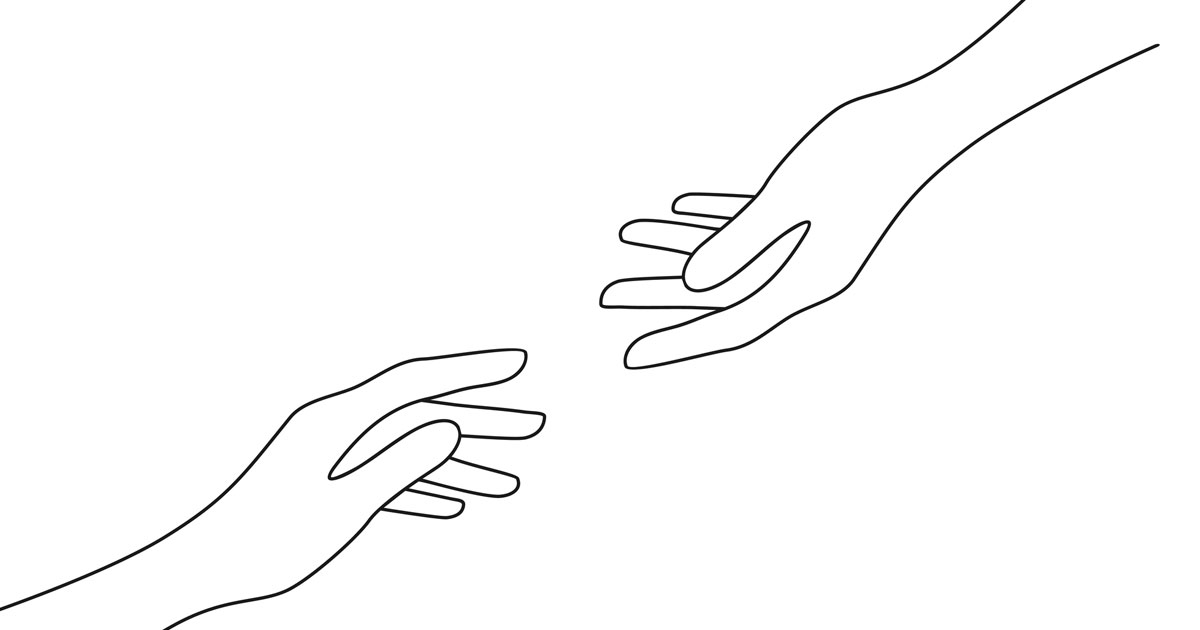Many people who have never encountered a loved one experiencing substance use issues and the […] The post The Role of an Interventionist appeared first on James Haggerty Recovery.


Many people who have never encountered a loved one experiencing substance use issues and the associated behavioral health impacts believe that substance use disorder (SUD) only truly affects the individual experiencing it. However, the reality is that this disorder can greatly impact friends, family, and others who care about the individual in question – and that’s one reason it is so critical to involve them when it’s time to express concerns and encourage the individual to get help. The other is that close friends and family are an excellent source of the love and concern that is crucial to a successful intervention.
While people who know the person with SUD wish to provide encouragement so that person can seek and maintain recovery, improve their physical and mental health, minimize the impact of the addiction on loved ones, and restore healthy, loving relationships, it often isn’t that simple. Loved ones may struggle to determine when it’s time to reach out with encouragement, feel uncertain about how to proceed with the details surrounding treatment itself, or may not know how best to interact with the person before, during, and after this conversation. For this reason, it’s highly recommended to meet with a skilled interventionist who can help people with SUD choose to take the help available to them and secure the necessary resources along the road to recovery.
You Are Not Alone
I know how overwhelming life becomes when a loved one has SUD. They may not feel they need help, or they may worry that treatment won’t be effective. As someone who has and is currently walking the path toward recovery, I can assure you and your loved one that recovery is a beautiful yet challenging experience that changes the lives of all involved for the better.
Of course, I didn’t do this alone – and that’s a key for any family dealing with SUD. In fact, most people can benefit from an interventionist to ensure that adequate preparation takes place, the conversation proceeds in a healthy manner, the individual is provided with a viable option for treatment, and the family makes meaningful progress. Know that there’s no shame in needing a third party to help you navigate this stressful time and that many individuals recovering from SUD were grateful an interventionist was contacted.
I have years of experience coordinating interventions, and while the process may sound intimidating at first, the ultimate goal is to help the individual and family heal. Today, I want to discuss in detail why a behavioral interventionist is effective, what they do, and what else you should know about the intervention process. It’s much more involved than the one-hour condensed session you may have seen on television, but in the best possible way – the more I can work with you and your loved one experiencing addiction, the better our chances at achieving a loving, successful intervention (or series of sessions) that ultimately result in that individual accepting the help they need.
What Is an Intervention?
First and foremost, it’s important to banish the myths surrounding the intervention process. While popular media has led many to believe that someone must hit “rock bottom” before they are willing to receive help or that people can only be helped if they want help and are willing to seek treatment, this is not usually the case. In fact, I believe it is an extremely important component of the intervention process to assess what we can do to determine what will prompt the person to want help and how we can lovingly encourage them to become willing to seek treatment. As a result, intervention may not look like the dramatic confrontations and strict bottom lines you see on television but can involve close work with an interventionist for weeks or months leading up to the acceptance of treatment.
With this in mind, the basis of an intervention comes about when someone has lost control of their substance use and may be averse to seeking treatment on their own; this can mean an intervention is crucial to help both the individual and family find a healthy place for healing. At its heart, an intervention is a strategically planned meeting between the individual in question, their loved ones, and a professional interventionist, and is meant to persuade the individual to seek treatment. Perhaps just as importantly, organizing an intervention with a professional interventionist can ensure the process is completed as efficiently as possible without further damage to the relationships at hand and thus benefits all involved.
It’s important to note that the point of an intervention isn’t to belittle the individual or shame them into agreeing to treatment because the family desires it. Rather, it’s to encourage them to pursue healthy recovery of the body, mind, and spirit and provide support to them in the process. As a result, when family and friends are hurt by SUD, their goal should not be to air their grievances against the individual but instead to support their loved one, voice their concerns, and offer professional help.
As you can see, an intervention is much more than a one-time meeting with an interventionist who encourages your loved one to get help. Good interventionists know how to help friends and family harness their experiences and concern for the individual in a very specific and organized way. Through preparation and a structured environment, a successful intervention helps the individual clearly see the situation at hand and realize they need outside help to halt the progression of their addiction. As an interventionist, it is my job to meet your loved one where they currently are in their addiction and determine how to help them do the hard work of recovery when they are unable to do it themselves.
What If the Individual Has a Mental Health Disorder?
Interventions primarily address the behaviors related to substance use disorder, which is itself a treatable mental health condition. However, it is well-known that other mental health disorders like depression, anxiety, PTSD, ADHD, personality disorders, bipolar disorder, and even schizophrenia are often experienced alongside substance use disorder. Whether anxiety, depression, or another disorder arose due to the effects of SUD, or substance use became a way to escape the effects of a mental health condition, if they exist together, mental health conditions and SUD are considered comorbid disorders.
One of the most critical reasons to work with a professional interventionist is that they are experienced with both SUD and comorbid mental health disorders. They can keep the process on track and make special considerations to ensure all involved are comfortable and cared for. It is important to note that in these cases, the goal is to encourage the person to seek help for their mental health disorder alongside SUD in a dual-diagnosis program. Without attention to both conditions alongside one another, recovery can be hindered or even remain out of reach.
A professional interventionist with experience in behavioral health can help ensure the treatment options presented are suitable for someone with dual diagnoses of SUD and a mental health condition. With the proper help – which typically consists of professional therapy like cognitive behavioral therapy, the introduction of coping skills, and many other evidence-based therapies – people who positively respond to intervention stand a better chance of remaining in recovery.
What Is the Purpose of an Interventionist?

As I mentioned above, while it’s technically possible to encourage your loved one to get help alone, doing so successfully is rare because intervention is quite a complex process. Hiring an interventionist means there’s someone you can rely on to facilitate a healthy discussion and give everyone a chance to speak. An interventionist will also dive deep into the history surrounding your loved one’s addiction to help you structure the meeting and formulate questions and responses in advance.
An interventionist’s tasks are to help you determine if intervention is the right next step, ensure everyone is well-prepared, devise an intentional, thoughtful structure for the process, and conduct the intervention or meeting itself. In general, these duties are meant to ensure all remain on the same page and capable of reaching the ultimate goal: to successfully encourage your loved one to accept the help they need in a safe environment.
In navigating these tasks, behavioral interventionists have many duties, but each is essential in providing support to your loved one.
Interventionists Advise You Regarding the Need for an Intervention
Many people seek the help of an interventionist while remaining unsure whether their loved one is really in need of such a meeting. Too often, people wait until they have determined the individual has “reached rock bottom” before seeking help. However, the stereotype of someone reaching rock bottom only to be saved with a dramatic, last-ditch intervention is just that: a stereotype.
In fact, there are many more subtle indicators that it may be time for an intervention, including trouble at work, trouble with the law, medical issues, or mounting relationship issues between members of the family and the person in question. For some individuals, a less intensive process may even be sufficient. An interventionist can help you determine whether your loved one needs substance use disorder treatment, whether intervention is the most effective way of encouraging treatment, and what your next steps should be.
Interventionists Can Help You Pre-Plan the Intervention
Before the meeting, the key role of an interventionist is to gather as much information about the person and their habits as possible, including how their addiction is harming themselves and others. An interventionist should examine the individual’s medical, psychological, and trauma history at this time. The interventionist will then discuss relationship and behavior-related history with concerned friends and family. This careful planning can help ensure the most effective meeting possible.
Interventionists Know How to Navigate SUD
You may not be familiar with SUD, and you may not yet know exactly how it’s affecting everyone else. Alternatively, you may know there’s a problem but feel unsure how to proceed. An interventionist helps you ask the right questions and begin to understand SUD before the intervention. They can also educate you on the more practical details, such as symptoms, what the treatment process might look like, and more.
They also know what patterns to look for in both the individual and their loved ones. For example, if an interventionist believes the individual has been misusing substances while aided by enablers, they can spot the patterns, identify them, and help those involved work on making changes.
Interventionists Give Everyone the Floor
It can be frustrating and even depressing to feel hurt or angry about a loved one’s substance use, only for your concerns to go unheard. You, in turn, may feel hopeless, ignored, or defeated. Fortunately, in an intervention, everyone will get a chance to voice their concerns, provided those are addressed with the goal of helping the loved one with SUD.
If you feel hurt or concerned for your loved one, you’ll have the opportunity to share your thoughts. So long as the goal remains to encourage someone to seek help, you can say what you need to.
Interventionists Keep the Conversation Going
Nothing is worse than a meeting about a serious topic going off the rails due to arguments – and helping a loved one recover from SUD is potentially the most life-changing meeting you’ll ever have. An interventionist knows the most crucial questions to be asked, as well as how to de-escalate an argument and bring it back to the task at hand. Essentially, an interventionist is responsible for keeping things moving so progress is made, and the individual is encouraged to get help. They ensure no one is shaming the loved one while also providing resources and advice on what the recovery process is like.
Interventionists Outline a Plan for Treatment
It’s important to recognize that a primary duty of an interventionist is not to describe the problem but instead to outline the steps necessary to address it. For many individuals, this involves attending SUD treatment on an inpatient basis, though many others can benefit from outpatient treatment. The interventionist will present this plan as well as the consequences involved should the individual refuse to participate.
Interventionists Help All Involved
As mentioned, interventionists are trained to identify enabling behaviors, codependency, trauma-related behavior, and even potential mental health disorders, whether in the subject of the intervention or a loved one. Whether or not your loved one proceeds to treatment as a result of the intervention, you could likely benefit from help, too. Your interventionist can help you find resources to deal with existing mental health conditions, trauma from your loved one’s substance use, or your own contributions to the crisis at hand.
The Benefits of a Professional Interventionist

While it may seem like you can stage an intervention yourself or help your loved one get help without an interventionist, successful amateur interventions are extremely rare. There is a great deal of risk involved when attempting to navigate an intervention without an interventionist – the individual or a loved one may feel attacked and derail the discussion or may even refuse treatment and flee, leaving them angry, betrayed, and still reliant on their substance of choice. Hiring an interventionist is a key way to avoid these potential issues when it’s time to encourage your loved one to seek treatment.
Consider the following benefits of a behavioral interventionist when deciding how to help your loved one with SUD:
Interventionists Can Address Comorbid Disorders
As mentioned, seasoned interventionists are well aware that SUD and mental health conditions often occur together. They also know that if an individual continues to misuse substances, they will eventually alter their brain chemistry, making it more difficult to treat comorbid mental health disorders or even resulting in additional mental health symptoms due to continued substance use.
A crucial benefit of an intervention conducted by an interventionist is that the individual is given the opportunity to address both sides of this phenomenon. For example, if someone with SUD is also battling depression, an intervention may allow them to open up about their struggles and explain why they’ve turned to substances. Because they’ll have the chance to speak their mind, they can fully elaborate on their mental state, which can help the behavioral interventionist ensure the individual makes an informed choice about their treatment options. Co-occurring disorders often go undertreated or unrecognized, but an intervention allows these individuals to provide an accurate summation of their mental state and experiences.
Interventionists Provide An Outside Perspective
Everyone has some form of bias, but if a loved one is spearheading the intervention and pushing the individual in a certain direction, this can ultimately do more harm than good. One of the best benefits of an interventionist is that they don’t have an existing bias regarding the individual and their loved ones. Because they don’t know the person with SUD firsthand, they won’t feel manipulated or swayed in a particular direction – all that informs the actions of an interventionist are the behaviors displayed, the needs of the individual, and their professional knowledge of addiction and the intervention process.
Interventionists understand how crucial it is to stand firm against substance use. They calmly yet firmly work to encourage people to change their behaviors and find healthier habits by attending treatment. While a loved one may try to manipulate the situation and force others to take their side or try to downplay certain aspects of mental health or SUD, an interventionist sees past all of this – which is often appreciated by the person with SUD. An outsider’s perspective can be crucial for helping the individual realize how their behavior has been affecting their own life and that of others.
Interventionists Can Provide Help Before and After the Intervention
Many believe an interventionist’s job begins when someone decides their loved one needs help and ends after the intervention is finished and the individual has sought help. However, an interventionist is still involved in assisting the individual and their loved ones before and after the meeting. Interventionists work with loved ones and other professionals long before an intervention takes place to determine the right way to move forward and encourage the individual to get help. In some cases, interventionists are involved for several months before the intervention occurs, and in others, a formal intervention never takes place as the individual agrees to seek treatment after working one-on-one with the interventionist.
After an intervention, the family dynamic may have changed, and the interventionist can help loved ones begin to navigate these changes. Family members may have discovered their own need for help, and an interventionist can be an excellent resource as all involved begin to navigate recovery. Finally, the interventionist remains an important source of guidance for both the individual and the family throughout these early stages of recovery.
What Makes a Good Interventionist?

Not every interventionist is the same, as every individual will employ slightly different techniques and strategies when putting an intervention together. However, if you are considering setting up an intervention for your loved one, it is important to secure the services of a skilled individual to help.
There are several things to consider when you’re looking to hire an interventionist:
Selecting an interventionist who cares for the family and is proactive in creating an intervention plan tailored to the situation can ensure your loved one’s intervention runs smoothly.
Speaking With an Interventionist Is Only the First Step: An Interventionist’s Responsibilities

Once you’ve selected an interventionist like me, it’s important to know what to expect next. For most cases, this involves a series of stages, though every individual and situation is different. Your interventionist’s responsibilities will continue to build as the intervention progresses.
Here’s what to look for:
Stage 1: Consultation
If you’re uncertain whether intervention is the right choice for your loved one, your interventionist will help you determine your next steps. The right strategy may or may not involve a formal intervention. Sometimes, in this initial consultation stage or during pre-planning meetings with loved ones, it is determined that the individual in question may benefit from an alternative method of suggesting treatment. If this is the case, the interventionist may work with you, your loved one, or all involved to encourage treatment in another setting.
Whatever the next steps, this consultation will help all involved devise the best strategy for ensuring your loved one ultimately receives help, whether it’s establishing a “bottom line” that requires the individual to seek help immediately to avoid consequences from friends and family or another approach entirely.
Stage 2: Family Training
At this stage, the interventionist will meet with all involved to gather a detailed history of the situation from each individual. As mentioned, at this time, the interventionist will also review the medical and psychological health history of the individual with SUD. This information is crucial to developing an effective intervention strategy and helping you feel confident in yourself as the intervention proceeds.
As a result of the history and information available, the interventionist will suggest a treatment option suitable for your loved one. These options are typically treatment options they trust and have had experience with for past clients. Alternatively, some interventionists work directly with a particular treatment center or may even offer treatment services of their own. You’ll be able to make contact with this treatment option so the treatment plan can be created and ready for implementation after the intervention.
The interventionist will also help you begin developing your contributions to the process. For example, friends and family are encouraged to draft letters to gather their thoughts and feelings about how the individual’s behavior has affected them, and the interventionist can help you write a cohesive, loving, and helpful statement that is conducive to the intervention goal. The interventionist will also help you anticipate your loved one’s reaction to the intervention and formulate loving responses and suggestions.
Finally, during this stage, the interventionist and others involved will create a timeline for the following stages of the intervention process.
Stage 3: Final Preparations
All involved should meet with the interventionist as the intervention date approaches, and sometimes, these meetings can take place over a span of a few weeks to a few months. The primary objective is not only to help you feel prepared for the intervention, but also to practice remaining calm and loving. This is easier said than done, especially if the person with SUD is a skilled manipulator, but the goal is to avoid anger and aggression and focus on getting them help.
The most crucial component of this stage is the rehearsal meeting, and all involved should plan to come together to hold a mock intervention. At this meeting, you will read your letter and make final edits with the intention of ensuring it is a helpful, loving statement that encourages your loved one to seek help. You will also work with the interventionist to anticipate your loved one’s response to this letter and develop an appropriate response.
Other things that occur at this meeting may include:
Stage 4: Intervention
While the intervention process has been ongoing for some time at this point, this is the stage most people refer to as the intervention itself. As mentioned, some individuals may not progress to this stage, as they may become ready to seek treatment with the help of an interventionist before the actual intervention takes place. In many cases, though, this stage begins with the pre-intervention meeting. The pre-intervention meeting looks much like the rehearsal meeting and is a final opportunity to ensure that the intervention itself is carefully tailored to the individual’s needs.
Once the intervention begins, the interventionist will detail the process to all present and establish their role as the facilitator of the meeting. You will then have the opportunity to read your letter in the predetermined order, and the interventionist will help you handle any issues that arise during the process. If the individual objects or resists, the interventionist will help lead the appropriate response. Ideally, the individual is able to understand the love and concern with which the intervention is held and agrees to the treatment plan outlined by the interventionist.
If they continue to resist or refuse treatment, the interventionist can indicate that it is time to review the loved ones’ bottom line letters. In many cases, these are not needed, as the interventionist is often able to help you and others lovingly guide the individual to consider the physical and mental health of all involved and accept the help offered. In essence, the interventionist’s role at this stage is to help focus your loving concern to gently and effectively encourage acceptance of help.
Stage 5: Post-Intervention
Regardless of the outcome, the interventionist will then aid you in shifting to the post-intervention protocol developed earlier in the process. If your loved one has agreed to accept treatment, the interventionist will initiate the travel and admissions process, guide you and your loved one through this journey, and offer additional support when issues arise. They will also notify the treatment facility of any and all information gathered during all stages of the process to help the facility develop an effective treatment plan. Finally, they can assess the needs of loved ones during this tumultuous time and can facilitate any foregoing treatment needs for anyone who is struggling.
There’s Always Hope

I’ve worked with countless clients in my time as an interventionist, and each case is uniquely challenging for everyone involved. SUD and interventions can bring many emotions to the surface, which can be both enlightening and devastating. Still, dealing with these emotions is an essential component of beginning healing.
Both individuals with SUD and their loved ones can be unsure whether there is truly hope, especially in the most severe cases. However, if there’s one thing I’ve learned about recovery, it’s that there is always hope. You, your family, and your loved one can find a way to heal as long as you remember that an interventionist isn’t there to prove your case or belittle someone who’s made harmful mistakes; instead, we are here to guide them on a path toward hope.
I’ve seen people successfully turn away from substances and go on to live meaningful lives thanks to intervention and skilled treatment. There’s no shame in needing help, whether it’s to cease substance use, repair your relationships, or encourage a loved one to seek treatment. What matters is what we learn and what we’ll do to enhance our future.
If you are concerned it might be time to hold an intervention for your loved one, get in touch with me today to inquire about your next steps. I offer skilled intervention services for those with SUD, as well as loved ones and friends who have felt the effects of the associated behaviors. There’s always a path forward, even if it takes time to walk – and I’m living proof. Let me help you find the same healing and joy in recovery I have.
Stay strong,
Jim
Resources:
National Institute of Mental Health. (n.d.). Substance use and mental health. https://www.nimh.nih.gov/health/topics/substance-use-and-mental-health National Institute on Drug Abuse. (2012). Drugs, brains, and behavior: The science of addiction. In National Center for Biotechnology Information (Ed.), PMC. https://pubmed.ncbi.nlm.nih.gov/22986797/ National Institute on Drug Abuse. (n.d.). Drugs and the brain. https://www.drugabuse.gov/publications/drugs-brains-behavior-science-addiction/drugs-brainThe post The Role of an Interventionist appeared first on James Haggerty Recovery.















